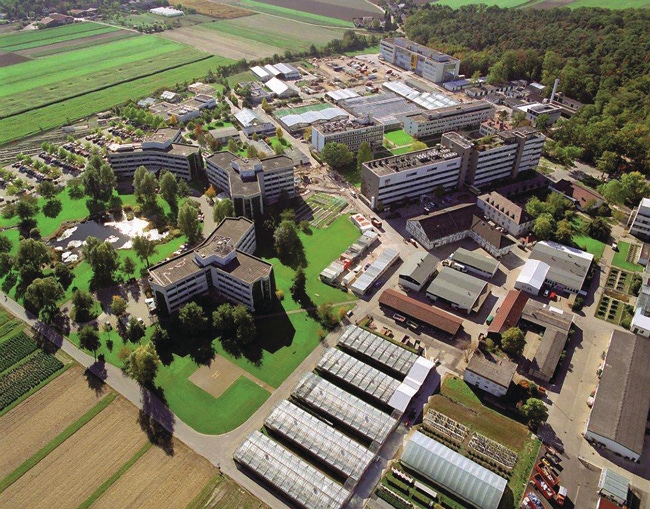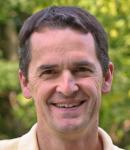May 8, 2012

It’s easy to feel dwarfed by the sheer size of BASF. Driving past BASF’s enormous chemical facility in Ludwigshafen, Germany, one can truly appreciate the immense size of the company. Here, BASF employs more than 33,000 of its overall workforce of more than 110,000.
BASF is the largest diversified chemical company in the world. The company develops and markets products that reach into just about every aspect of consumer life. On the company’s website, it lists 25 industries in which it provides products.
The company’s footprint in agriculture is significant. BASF is a well-known brand in the agricultural herbicide, insecticide and fungicide markets. The company’s agricultural division, headquartered in Limburgerhof, Germany, has approximately 1,600 employees.
BASF was founded in 1865 and is most noted in the early years for the development of synthetic dyes, sodium carbonate and sulfuric acid. The company’s agricultural headquarters has historical significance, for it was there, in 1913, that BASF scientists first developed an industrial process to fix atmospheric nitrogen and produce synthetic ammonia. That paved the way for BASF’s foray into mineral fertilizers and, consequently, into agriculture.
Today’s agricultural chemical products are a long way from the initial beginnings. At Limburgerhof, the company works to expand its agricultural chemical portfolio. Its research staff works to not only develop new active ingredients, but to ensure current active ingredients are used to their fullest potential.
Product integration
Agriculture has always been a key component for BASF, and the company has implemented strategies to strengthen its presence in the marketplace.
“Two years ago we embarked on our 2020 strategy,” explains Mark Shillingford, global strategic marketing crop protection head of corn and soybeans for BASF. “We decided to look at how farmers view their crops instead of purely being a company that supplies typical herbicides, fungicides, insecticides and seed treatments.”
The company remains committed to those four core business units of herbicides, fungicides, insecticides and seed treatments, but it has added a fifth unit: functional crop care.
“The functional crop care area will focus beyond our current products and into how we can integrate all our core products and develop broad-based solutions for our customers,” Shillingford says. “In the past, we focused a lot on individual products. But our customers want more.
“For U.S. corn producers, one of the most common ways to increase yield has been to increase plant population,” he continues. “With these increased populations, plants become stressed. Also, with more corn-on-corn we are seeing new disease pressures. This will require a systems approach to manage disease, insect and weed pressure. We want to bring a complete package of solutions to producers.”
It’s a tall task for a global company. That’s because the knowledge base differs significantly from country to country. BASF’s corn portfolio reaches 13 countries and its soybean portfolio is in six countries. “Within these regions there are very different cultural practices and levels of technical understanding,” Shillingford explains. “We work to take successful technologies and services developed in one country and transfer that knowledge, portfolio and approach to other countries.”
It requires a different level of teaching, and in some cases a different approach to the market. “But the interesting thing is that at the end of the day, producers from all parts of the world want basically the same result: Produce more yield and better quality with optimized inputs. How we meet those needs differ, but the end result is the same,” Shillingford says.
It’s a different mind-set for a company that has traditionally been a supplier of crop protection products. But Shillingford says this new approach will not only benefit BASF customers, but also BASF itself.
Discovery process
The agricultural research headquarters for BASF remains a hotbed of activity as the company continues to screen hundreds of thousands of compounds in search of that next active ingredient. And one of the company’s key strategic advantages is its broad range of expertise with a variety of chemical compounds.
The company actively looks at all aspects of its production processes in its efforts to discover new compounds and breathe new life into existing compounds. It’s a process called Verbund, which in the German language means integrating, or linking, of various processes to achieve maximum results. It’s more than a simple word, however. Within BASF’s extensive chemical portfolio are a myriad of formulations and processes that are being shared across platforms.
For example, the company developed its new product line of Xemium fungicides using the latest in carboxamide technology. “Our experience with boscalid [the active ingredient in Endura fungicide] led us to this new, broader spectrum product,” explains Ulf Groeger, the global project leader for Xemium, BASF. “Xemium controls a broad spectrum of diseases as well as a wide range of life stages of the fungus.”
It was BASF’s long history of work with carboxamides that led to this breakthrough technology. “Fungal diseases are estimated to rob 20% of the world’s crop yield,” says Frederik Menges, global marketing manager, fungicides, BASF. “This product will be offered in a broad spectrum of crops, including cereals, corn and soybeans.” For U.S. producers, premix formulations containing Xemium will be Priaxor fungicide for crops, including corn and soybeans.
The road to Xemium started with research into current chemistries. “We looked at boscalid and checked for different characteristics and what we wanted. And one prerequisite was good mobility,” Menges says. “We screened thousands of different molecules and came up with one candidate.”
While boscalid remains a very effective product, researchers at BASF looked to make it even better. “Because Xemium is a mobile compound, it can distribute evenly within the leaves. And because of its movement, it can stay ahead of the fungus. It also reaches already infested areas, which is the reason why we are seeing some of the curative responses to the product,” Groeger says.
The company continues its efforts to discover and develop new active ingredients and new compounds for agricultural producers. It is work that will continue and grow in importance — for BASF and its customers.
About the Author(s)
You May Also Like






